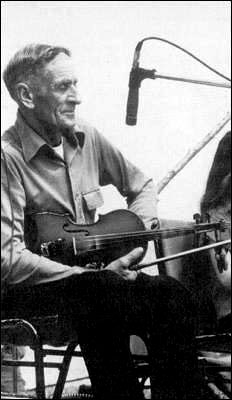Elmo LeBlanc
Kith Folk
Elmo LeBlanc was born at Saint-Anne-de-Kent on June 17, 1954. He started playing fiddle at the age of 7 and was inspired by his father, Johnny LeBlanc, as well as both his grandfathers, Tuis LeBlanc and Stanley Chiasson who were Acadian fiddlers. He formed a band called "Elmo LeBlanc and His Musicians" and they performed for 16 years. He has played for kitchen parties and dances, as well as radio and television. He has also performed at Le Pays de la Sagouine. He composed the tune "The Arcadian Reel". When not busy fiddling, he works for B.A.Richards Fish Plant where he has been employed for 20 years.
Discography: 1. "Fiddler Elmo LeBlanc - Son of Acadian Pioneer". Recorded at Rite Track Productions, Leominister, Ma. LP and cassette. (1984) 2. "Elmo LeBlanc-Acadian Fiddler" produced by Raymond Legere, cassette (1994)
















